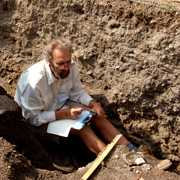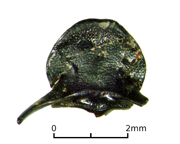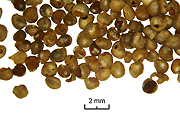Professor Mark Robinson

Email: mark.robinson@oum.ox.ac.uk
Phone: +44 (0)1865 272983
Research summary
My research currently covers three areas of environmental archaeology: Holocene changes in the British insect fauna in relation to past human activity, botanical aspects of Roman diet and the environment of the Bay of Naples area of Italy. Fieldwork is being undertaken at Pompeii. A fourth area of research is in the genetic make-up of the British population in relation to archaeological and historical evidence for past population movements, working with geneticists and medical statisticians of the People of the British Isles project. I have recently completed a major review of the archaeology of the Thames Valley (the Thames through Time project) with Oxford Archaeology. An earlier research theme, the environmental archaeology of flooding and alluviation in the Thames Valley, has again become topical.
Biography
- MA Zoology (University of Oxford)
- PhD (Institute of Archaeology, University of London)
- Lecturer, Oxford University School of Archaeology;Dean, St Cross College;
Director, Environmental Archaeology Unit of the OUMNH

Middle Bronze Age head of a male Onthophagus taurus dung beetle
Selected publications
Robinson, M. 2013. The relative abundance of Onthophagus species in British assemblages of dung beetles as evidence for Holocene climate change. Journal of Environmental Archaeology, 18, 132-43.
Robinson, M. 2013. Holocene archaeological evidence of extinct and very rare British Scarabaeoidea. Journal of Environmental Archaeology, 18, 143-53.
Robinson, M. 2012. The place of Silchester in archaeobotany. In: Fulford, M. (ed), Silchester and the Study of Romano-British Urbanism. Journal of Roman Archaeology Supplementary Series 90. Journal of Roman Archaeology, Portsmouth, Rhode Island, 213-26.
Robinson, M. 2011. The macroscopic plant and invertebrate remains from mid-Roman Silchester. In: Fulford, M. & Clarke, A., Silchester: city in transition. The mid-Roman occupation of Insula IX c.A.D. 125-250/300. A report on excavations undertaken since 1997. Britannia Monograph Series 25, London, 281-93, 485-96.
Robinson, M. 2011. The prehistoric and protohistoric archaeology of Pompeii and the Sarno Valley. In: Ellis, S.J.R. (ed), The making of Pompeii. Journal of Roman Archaeology Supplementary Series 85, Portsmouth, Rhode Island, 19-36.
Archaeology and environment of the Thames valley
Hey, G., Garwood, P., Robinson, M. , Barclay, A. & Bradley, P. 2011. The Mesolithic, Neolithic and early Bronze Age, in The Thames through time. The archaeology of the gravel terraces of the Upper and Middle Thames. Early prehistory: to 1500 BC. Oxford Archaeology, Thames Valley Landscapes Monograph 32, Oxford, 151-521.
Lambrick, G. with Robinson, M. 2009. The Thames through time. The archaeology of the gravel terraces of the Upper and Middle Thames. Late prehistory: 1500 BC - AD 50. Oxford Archaeology, Thames Valley Landscapes Monograph 29, Oxford, 428 pp.
Booth, P., Dodd, A., Robinson, M. & Smith, A. 2007. The Thames through Time, the archaeology of the Gravel Terraces of the Upper and Middle Thames, the early historical period: AD 1-1000.Oxford Archaeology Thames Valley Landscapes Monograph 27, Oxford, 470 pp.
Thames flooding and alluviation
Robinson, M. A. 1992. Environment, archaeology and alluvium on the river gravels of the South Midlands. In: Needham, S.P., and Macklin, M.G., (eds), Alluvial archaeology in Britain. Oxbow Monograph 27, Oxford, 197-208.
Robinson, M. A. & Lambrick, G. H. 1984. Holocene alluviation and hydrology in the Upper Thames basin. Nature, 308, 809-14.

Mineralised fig seeds from a Roman sewer at Herculaneum
Affiliations
Society of Antiquaries (Fellow)
Association of Environmental Archaeology
Environmental Archaeology Unit
Current DPhil students in the Unit and their research topics:
Dana Challinor - Roman wood use for fuel at Pompeii and Herculaneum.
Rachel Hesse - The use of animals in Roman religion.
Lisa Lodwick - The archaeobotany of late Iron Age and Roman Silchester.
Erica Rowan - Roman dietary evidence from a sewer at Herculaneum.
Enquiries regarding the unit should be sent to: archaeo@oum.ox.ac.uk
